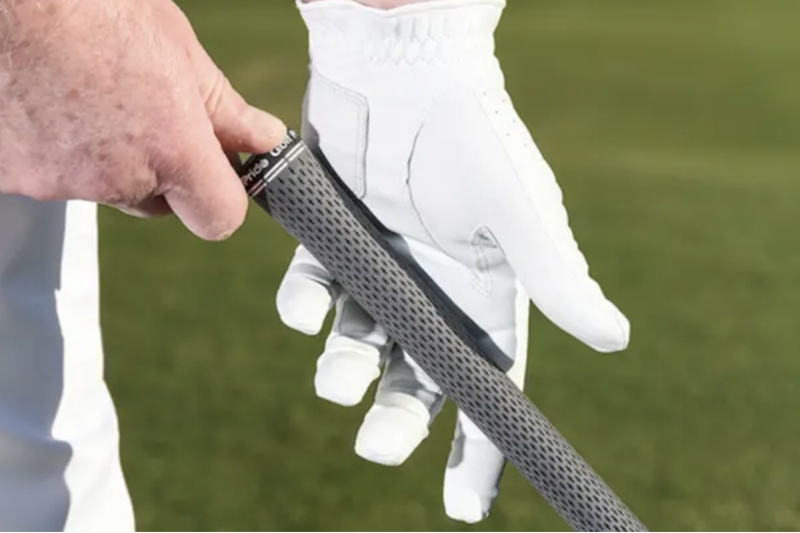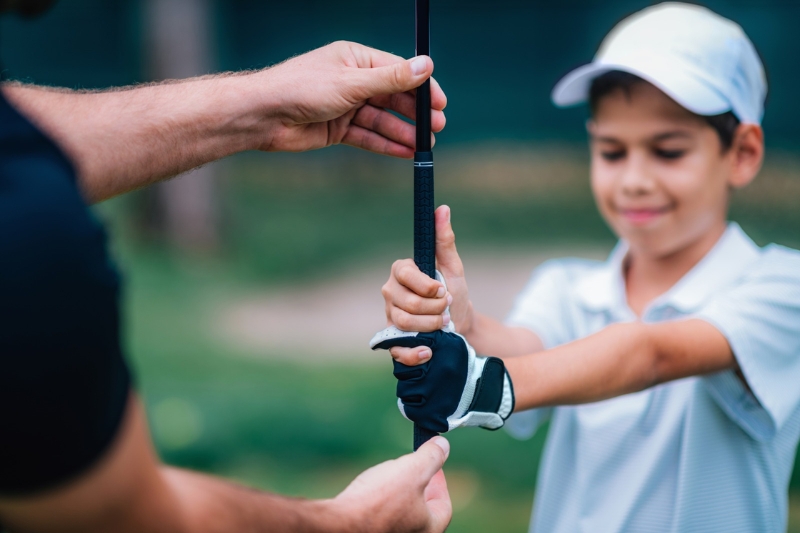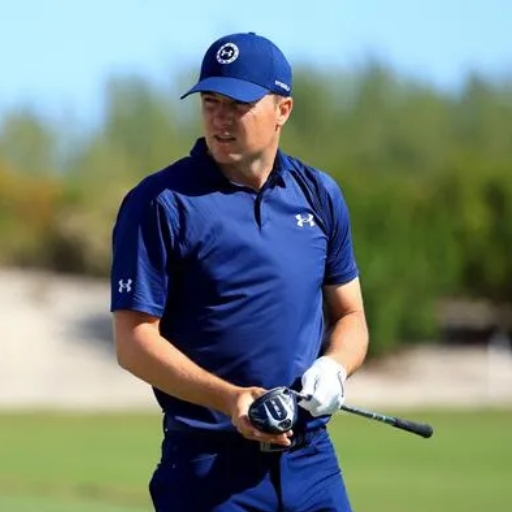Golf is a game of precision, skill, and technique. For left-handed golfers, mastering the grip is the fundamental building block of a successful swing. While the basic principles of gripping the club remain consistent across handedness, there are subtle nuances that left-handed players must consider when developing their grip. This article aims to provide an in-depth exploration of how to hold a left-handed golf club effectively, covering various aspects such as stance, swing path, common mistakes, grip pressure, equipment selection, and more. By understanding these elements, left-handed golfers can generate power and control, ultimately leading to consistent shots and lower scores.
How to hold a left handed golf club

The grip is arguably one of the most critical components of a golfer’s technique. For left-handed golfers, this means placing the left hand on the club in a way that promotes balance and control throughout the swing.
The V-Shaped Grip
The standard grip for both right and left-handed players focuses on creating a V-shape between the thumb and forefinger. For lefties, this involves positioning the left hand on the club with the thumb pointing towards the right shoulder when looking down at the grip. This V-shaped grip helps align the hands with the target line, promoting a balanced and controlled swing.
Creating the V-shape begins with the left hand’s placement on the grip. The fingers should wrap around the club, ensuring that the index finger points down the shaft and aligns with the left eye. This alignment is crucial for achieving accuracy and consistency in your shots. The thumb should rest lightly on the club without squeezing too tightly, allowing for a fluid motion during the swing.
Hand Placement and Positioning
Proper hand positioning is essential for left-handed golfers. The left hand should be placed comfortably on the club, striking a balance between being too tight and too loose. A grip that is too tight can lead to tension in the arms and shoulders, which negatively impacts the swing. Conversely, a grip that is too loose may result in a lack of control over the club.
Experimenting with different hand placements can help you find what feels most natural. Some players prefer to position their left hand closer to the top of the grip, while others may feel more comfortable placing it further down. Finding the right position will enhance your ability to control the clubface and generate power.
Adjusting for Individual Differences
Every golfer has unique hand sizes and grip preferences. It’s important to recognize that there is no one-size-fits-all approach to gripping the club. Experimenting with various grip strengths and positions can help you discover what works best for you.
For instance, some left-handed golfers may benefit from a stronger grip, where the left hand is rotated slightly to the left. This adjustment can create a closer relationship between the hands and the clubface, enhancing control. On the other hand, a weaker grip, with the left hand rotated slightly to the right, may work better for those who struggle with hooks or excessive draw.
Stance and Alignment for Left-Handed Golfers

A solid stance is foundational to a successful left-handed golf swing. It provides stability and dictates the overall alignment of your body relative to the target. Here’s how to establish a proper stance for left-handed golfers.
Feet Placement
Begin by positioning your feet shoulder-width apart, with your left foot slightly ahead of your right foot. This staggered stance creates a natural athletic position, allowing for easier rotation of your hips and shoulders during the swing. The left foot’s forward placement also helps facilitate an upward swing path, which is essential for generating distance.
It’s important to ensure that your weight is evenly distributed across both feet. However, slightly favoring your left foot can help maintain balance and stability as you swing. This distribution prevents excessive tilting or swaying, which can lead to inconsistent shots.
Ball Position
The ball’s position in your stance plays a significant role in determining the trajectory and distance of your shot. For left-handed golfers, the ball should be placed slightly forward in your stance, closer to your left foot. This positioning encourages a natural upward swing path, driving the ball higher and longer.
Adjusting the ball position may be necessary based on the club you are using. For example, when using a driver, you may want to position the ball even further forward compared to shorter clubs like irons. Understanding how ball position affects your shots is key to improving your overall performance.
Alignment to Target
Alignment is crucial for achieving accurate shots. To ensure proper alignment, point your left foot towards the target. This sets the foundation for your entire body alignment, ensuring that your shoulders and hips are also aligned correctly with the target.
Using the club as a visual aid can help confirm your alignment. The shaft of the club should point toward the target line, aligned with your left foot. Additionally, make sure your left shoulder is also aligned with the target line. Proper alignment will help you achieve a consistent swing path and improve your accuracy.
Understanding the Swing Path: Key Differences for Lefties
The swing path refers to the trajectory the clubhead takes as you move from the backswing to the downswing. For left-handed golfers, understanding the typical swing path is crucial for maintaining accuracy and consistency.
Backswing
As you initiate your backswing, the clubhead should move slightly inward, away from the target line. This inward movement sets up a smooth transition into the downswing. Maintaining a controlled and steady pace during the backswing is vital, as rushing this phase can lead to inconsistencies later in the swing.
During the backswing, focus on keeping your left arm straight while allowing your right arm to fold naturally. This position helps create a full shoulder turn, which is essential for generating power during the downswing. The goal is to create a coiled position that allows for an explosive release of energy through impact.
Downswing
The downswing for a left-handed golfer should begin with a smooth, controlled motion. The clubhead should come down from the inside of the swing plane, leading toward the ball. Think of this as a cutting-down motion, ensuring that your hands stay ahead of the clubhead throughout the swing.
Maintaining a proper swing path during the downswing is crucial for avoiding common issues such as slicing or hooking the ball. Focus on keeping your body aligned with the target line and allowing your hips to rotate naturally. This will help you achieve a consistent and powerful strike on the ball.
Finish
The ideal finish for your left-handed swing should have the clubhead pointing toward the target, with your body fully rotated. A complete follow-through is essential for maintaining balance and ensuring that your swing path remains consistent.
After making contact with the ball, allow your body to continue rotating toward the target. This motion not only helps with balance but also ensures that you are utilizing your entire body to generate power. A strong finish indicates a well-executed swing and contributes to overall consistency in your game.
Common Mistakes to Avoid: Left-Handed Golf Club Mishaps

While mastering the left-handed grip and understanding swing path is essential, several common mistakes left-handed golfers should actively avoid.
Over-Swaying
One prevalent mistake among left-handed players is over-swaying during the downswing. This occurs when you shift your weight too far to the right during the backswing, resulting in a loss of balance and inconsistency in your swing. To avoid this issue, focus on maintaining a centered weight distribution throughout your swing.
Practicing balance drills can help reinforce proper weight transfer. Consider using alignment sticks or markers to visualize your weight distribution during practice swings. This awareness will contribute to a more stable and controlled swing.
Pulling the Club
Pulling the club is another common error that can lead to shots going left of the target. This mistake often arises from trying to muscle the ball with your left hand rather than allowing your body to generate power naturally. To combat this tendency, focus on maintaining a relaxed grip and letting your body initiate the swing.
Incorporating drills that emphasize body movement over hand strength can help you develop a more fluid swing. Practice swinging with a lighter club or using one hand to reinforce the importance of body mechanics in generating power.
Casting the Club
Casting the club occurs when you release your left hand too early in the downswing, causing the clubhead to move outside the swing plane. This often results in a slice. To avoid casting, concentrate on keeping your left hand connected to the grip throughout the swing.
Drills that promote connection between your hands and the club can be beneficial. Consider practicing slow-motion swings to reinforce the feeling of maintaining control throughout the entire swing motion.
The Importance of a Proper Grip Pressure

Grip pressure is a crucial factor in achieving a consistent and smooth swing. Left-handed golfers need to understand the significance of the right grip pressure and how it affects their swing.
Finding the Right Balance
Your grip pressure should be firm yet relaxed. A strong grip is necessary for maintaining control over the club, but excessive pressure can lead to tension in your muscles, restricting your swing. Striking the right balance is essential for achieving optimal performance.
To find the appropriate grip pressure, experiment with different levels during practice sessions. Pay attention to how varying grip pressures affect your swing and shot outcomes. This awareness will help you develop a consistent feel for the right amount of pressure.
Consequences of Too Much Pressure
Excessive grip pressure can lead to several negative consequences. First and foremost, it can cause a loss of flexibility. Tightening the muscles in your arms and hands hinders your ability to swing freely and powerfully. This restriction can result in inconsistent shots and decreased distance.
Additionally, a tight grip can limit your control over the clubface. When you tense up, it becomes challenging to feel the club and make necessary adjustments to your swing path. This can lead to faded shots or unintended hooks.
Consequences of Too Little Pressure
On the flip side, a loose grip can also pose challenges. Lack of control is a common issue when grip pressure is too light. A weak grip can make it difficult to direct the ball accurately and may result in the club slipping from your hands during the swing.
Moreover, an uncontrolled swing often arises from insufficient grip pressure. A loose grip can lead to excessive hand rotation, resulting in hooks or slices. Striking the right balance is essential for achieving a stable and consistent swing.
Choosing the Right Equipment: Left-Handed Golf Clubs and Balls
Selecting the right equipment is essential for maximizing performance and enjoyment on the course, especially for left-handed golfers. Here’s what you need to know about choosing the best clubs and golf balls for your game.
Golf Clubs
Finding a complete set of clubs specifically designed for left-handed golfers is paramount. Left-handed clubs ensure that the clubface angle and shaft orientation match your swing path and hand position. Many manufacturers offer left-handed options, so take the time to explore various brands and models.
When selecting clubs, consider factors such as shaft flex, length, and grip size. These elements play a significant role in how the club performs during your swing. Testing different clubs at a local pro shop or fitting center can help you determine which options suit your game best.
Golf Balls
Choosing the right golf ball is equally important for left-handed golfers. Different golf balls offer varying levels of spin, distance, and feel. Consider your playing style and preferences when selecting a golf ball.
If you prioritize distance, look for balls designed for maximum distance and low spin. Conversely, if you value control and feel around the greens, consider balls that offer higher spin rates. Testing different golf balls during practice rounds can help you identify which options complement your game.
Custom Fitting
Custom fitting is an excellent option for left-handed golfers seeking to optimize their equipment. A professional fitting session can assess your swing characteristics and recommend clubs tailored to your specific needs. This personalized approach ensures that your equipment enhances your performance on the course.
Investing in custom-fitted clubs can significantly impact your game, providing you with the confidence and tools needed to succeed. Whether you’re a beginner or an experienced player, finding the right equipment is essential for achieving your golfing goals.
Conclusion
Mastering the left-handed grip is a fundamental aspect of becoming a successful left-handed golfer. By understanding the nuances of grip, stance, swing path, and common mistakes, left-handed players can enhance their performance on the course. Additionally, prioritizing proper grip pressure, selecting the right equipment, and seeking guidance from experienced professionals can further elevate your game. Embrace your left-handedness with confidence, and remember that every golfer’s journey is unique. With dedication and practice, you can achieve your golfing goals and enjoy the sport to its fullest.

I am the owner of Ricks Golf Shop, a popular destination for golf enthusiasts. My passion for golf began in my teenage years and has only grown over the years. With over 10 years of experience in the golf industry, I offer expert advice and quality products. With a friendly demeanor and extensive knowledge, I ensure every customer leaves happy.
